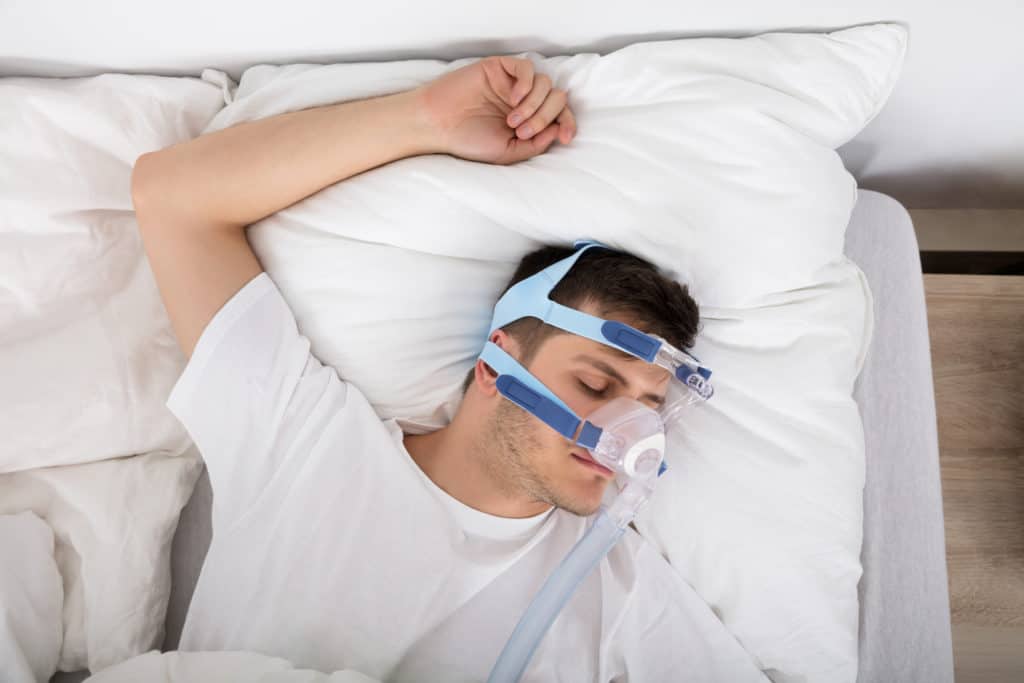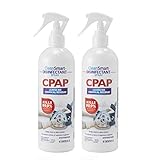DIY CPAP Cleaning Solution: Step-by-Step Guide
Improving your overall health and quality of life might be as simple as regularly maintaining and cleaning your Continuous Positive Airway Pressure (CPAP) machine if you’re one of the millions of sleep apnea sufferers. This important device is crucial in giving you a peaceful night’s rest, yet many people may be unknowingly neglecting it. Understanding how a CPAP machine works, why regular cleaning is essential, and how to make homemade cleaning solutions are key aspects that often go overlooked, leaving potential for respiratory discomfort or infections. This guide is your one-stop solution to demystifying the details that surround CPAP machine, its components, and why cleanliness isn’t just an add-on but a necessity.
Understanding CPAP Equipment
Understanding Continuous Positive Airway Pressure (CPAP) Devices and the Imperative of Regular Cleaning
One of the most significant advancements in the realm of respiratory care, the Continuous Positive Airway Pressure, or CPAP, machine has been and continues to be a boon for individuals grappling with sleep disorders, notably Obstructive Sleep Apnea (OSA). This groundbreaking device entails a simple, non-invasive modality that supplies steady air pressure, aiding the patient in keeping their airways patent while asleep, thus normalizing nocturnal respiratory functions and mitigating the often-debilitating symptoms of OSA.
Understanding the mechanics of a CPAP machine proves imperative in comprehending its functionality and maintenance requirements. The quintessential elements of a CPAP machine are a motor, a hose, and a mask. The motor acts like a fan, drawing in the ambient air and lightly pressurizing it. The pressurized air then travels through the hose and is delivered comfortably to the airways via the mask. It’s simplicity in design, however, belies the sophistication of its function. By generating positive air pressure, the device prevents the collapse of the airways during sleep, affording an uninterrupted, serene slumber to its user.
The topic, however, expands to embody a potent query – why does a CPAP machine require frequent cleaning? The reasoning grounds itself in the pursuit of optimal machine operation and the minimization of potential health hazards.
Enclosed within the chambers of a CPAP machine, moist and warm environments may inadvertently serve as a hospitable breeding ground for a myriad of deleterious micro-organisms – bacteria, viruses, yeast to name a few. Consequently, an unkempt CPAP machine raises the risk of respiratory infections, skin irritations, and an unpleasant odor that prejudicially impact the user’s CPAP experience.
Moreover, dust and allergens can collect in the hose and mask over time, posing potential risks for those with allergies or respiratory conditions like asthma. Additionally, the efficiency and longevity of the machine itself could be compromised by build-ups of dust or detritus without regular cleaning.
Frequency, however, transcends mere removal of visible debris or ‘dirt’. The mask, hose, and water chamber should ideally undergo a thorough cleansing with a mild, unscented soap, followed by a rinse in warm water weekly, whereas the non-disposable filter necessitates monthly attention.
In conclusion, while a CPAP machine underscores an invaluable lifeline in managing sleep disorders, an understanding of its dynamics and a commitment to its regular and meticulous maintenance bear equal significance. In the confluence of these practices, efficacy converges with safety, securing the individual’s respiratory health and CPAP device longevity.

Ingredients for the CPAP Cleaning Solution
The Essentials for a Homemade CPAP Cleaning Solution: A Closer Examination
Many of us in the scientific and medical communities understand the intricacies and nuances involved in maintaining CPAP devices. Building on this understanding, we now delve into creating effective homemade CPAP cleaning solutions. To ensure optimal function and efficacy of a CPAP machine, implementing weekly cleansing is essential. For this purpose, certain items and ingredients are indispensable.
At the crux of creating a homemade CPAP cleaning solution lies an efficacious disinfectant: a mixture of mild, unscented soap and distilled water . It’s imperative to avoid scented soaps as these can potentially leave residue that may prove harmful when inhaled. Warm distilled water is preferred for its ability to dissolve soap better than cold water and for its lack of impurities compared to tap water.
Crucially, a bathroom sink or tub, or a large basin would be required to create a bath solution for the CPAP components. This provides a spacious enough environment for the mask, hose, and water chamber to soak thoroughly.
Accompanying the soap mixture is white vinegar —an effective, non-abrasive disinfectant. A solution of 1 part white vinegar to 3 parts water serves as a thorough cleansing agent, particularly for the hose and masks. It additionally curbs the growth of bacteria and fungi, eliminating any malodor to maintain desirable hygiene.
To further enhance the efficacy of this solution, gentle cleaning tools are suggested. Soft, lint-free cloths and brushes adequately clean components such as the mask and water chamber without risk of damaging them. The cleaning brush should be small and non-abrasive, similar to a soft toothbrush, ideal for reaching the interior of the hose to ensure a thorough cleanse.
Drying is an essential part of this cleaning process, as damp environments can quickly become breeding grounds for bacteria and mold. Thus, having a towel on hand for drying off components after their bath and allowing them sufficient air-drying time is important for maintaining cleanliness and function.
In a nutshell, a homemade disinfecting solution for CPAP machines requires mild, unscented soap; distilled water; white vinegar; a basin ; soft cloths; a small brush , and a towel . This solution, incorporated into a regular cleaning protocol, assists in ensuring the durability, longevity and efficacy of CPAP devices. Armed with these basic but crucial tools and ingredients, diligent maintenance of a CPAP device can be achieved seamlessly, thus ensuring optimal benefits of this essential respiratory aid.
Remember, cleanliness is not an option but a required measure for longevity and maximum efficacy. So, it is critical not to overlook or underestimate the power of cleanliness with regards to CPAP devices, even when a commercial solution isn’t readily available. With these tools and components in your arsenal, a clean and effective CPAP machine is within reach.

Making and Using the Solution
Extending beyond the realm of knowledge we have previously touched upon, it becomes essential to delve into the process of creating a homemade Continuous Positive Airway Pressure (CPAP) cleaning solution. Despite the existence of commercial cleaners, preparing a homemade solution is not merely an affordable alternative, but also entirely reliable when the right steps are followed meticulously.
Commencing with the ingredients necessary for the solution, a gentle, unscented soap takes precedence. Delicate in nature, it promises to nullify belligerent bacteria without causing damage to the CPAP components. Partnered with soap is distilled water, chosen for its purity that significantly reduces the risk of mineral accumulation, hence sparing the device from damage.
An alternative to this mild soap solution comes in the form of white vinegar. Often credited for its disinfectant properties, vinegar does not do damage to the CPAP devices. The recommended ratio is quite precise: one part of white vinegar should be paired with three parts of distilled water.
When conducting the cleaning process, refrain from rugged or abrasive techniques that have the potential to damage the delicate components of the CPAP device. Instead, it proves beneficial to indulge in gentle agitation and strokes during the sanitizing process.
A bathroom sink, large tub, or basin provides ample space for the process of soaking, requiring room for the hose, mask, and water chamber to submerge completely. Be certain to allow sufficient contact time for the solution to effectively slay any residing bacteria.
After the process of cleaning, a critical stage in achieving an entirely sterilized device is the drying phase. Proper drying is instrumental in disallowing any bacterial growth or mold development. A clean, dry towel or naturally drying the components in a ventilated area devoid of direct sunlight proves effective.
In closing, without needing commercial solutions, an adequately clean CPAP device can be achieved with the use of household ingredients and items. The regular engagement in this cleaning process ensures not only the efficacy but also enhances the durability of the devices. The onus of health remains inextricably linked to cleanliness, a fact that is just as relevant to CPAP devices. Such maintenance efforts ensure the therapeutic benefits it promises for debilitated sleep could be preserved in the long run.

To sum up, keeping your CPAP equipment clean is integral to maintaining your health and ensuring the longevity of your device. A homemade cleaning solution is an economical and effective way to maintain this cleanliness. By understanding the roles and importance of each component of your CPAP machine, you’ll recognize how crucial it is to maintain the integrity of these pieces through regular cleaning. Mastering the recipe for your at-home CPAP cleaning solution will not merely help you save money, but also ensure that you’re ready to tackle any potential hygiene issues head-on, promoting better sleep and a healthier life.





